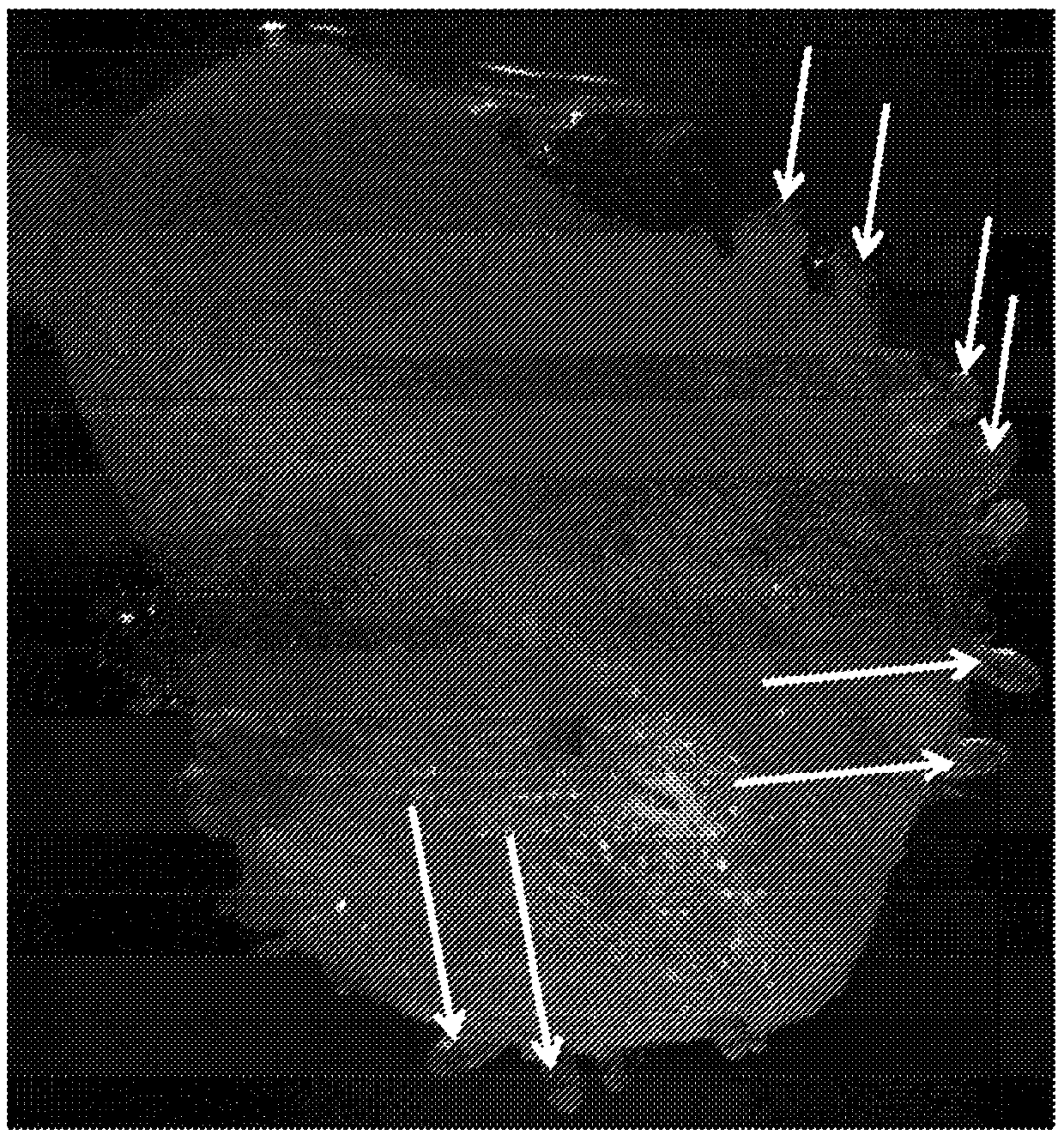Methods and compositions for rapid plant transformation
A plant, transgenic plant technology, applied in the field of plant molecular biology, can solve negative problems, inefficiency, and impact on the development timetable of genetically modified products, etc.
- Summary
- Abstract
- Description
- Claims
- Application Information
AI Technical Summary
Problems solved by technology
Method used
Image
Examples
example 1
[0256] Example 1: Plasmids.
[0257] Plasmids containing the T-DNA described in Table 1 were used in the experiments described below. The plasmids listed in Table 1 have T-DNAs containing the indicated components.
[0258] Table 1. Plasmid components.
[0259]
[0260]
[0261]
[0262]
[0263]
[0264]
example 2
[0265] Example 2: Culture medium.
[0266] Various media are cited in the examples for transformation and cell culture. Media compositions are as described in Tables 2-9 below.
[0267] Table 2. Media used for sorghum transformation.
[0268]
[0269]
[0270] a PHI-I, PHI-T, PHI-U, PHI-V, PHI-X and PHI-Z media from Zhao et al. 2000
[0271] b MS vitamin stock solution: 0.1g / l niacin, 0.1g / l pyridoxine hydrochloride, 0.02g / l thiamine HCl, 0.4g / l glycine.
[0272] Table 3. Composition of Wheat Liquid Infection Medium WI 4.
[0273]
[0274] Table 4. Composition of wheat co-culture medium WC#10.
[0275]
[0276]
[0277] Table 5. Composition of wheat green tissue culture medium DBC4.
[0278]
[0279] Table 6. Composition of wheat green tissue induction medium DBC6.
[0280]
[0281]
[0282] Table 7. Composition of wheat regeneration medium MSA.
[0283]
[0284] Table 8. Composition of wheat regeneration medium MSB.
[0285]
[0286] ...
example 3
[0293] Example 3: Particle bombardment.
[0294] Before bombardment, 10-12 DAP immature embryos were isolated from ears of the pioneer inbred line PH184C and placed on medium containing 16% sucrose for 3 hours to separate the scutellum cytoplasm.
[0295] Four plasmids are typically used per particle bombardment; 1) a donor plasmid (100 ng / μl) containing the FRT flanking donor cassette for recombinase-mediated cassette exchange, 2) containing the expression cassette UBI PRO::FLPm:: A plasmid for PinII (2.5 ng / μl), 3) a plasmid for expression cassette UBI PRO::ODP2::PinII (10 ng / μl), and 4) a plasmid for expression cassette UBI::WUS2::PinII (5 ng / μl ). For DNA attachment to 0.6 μm gold particles, the four plasmids were mixed by adding together 10 μl of each plasmid (40 μl total) in a low-binding microcentrifuge tube (Sorenson Biosciences 39640T). To this suspension, 50 μl of 0.6 μm gold particles (30 μg / μl) and 1.0 μl of Transit 20 / 20 (Cat. No. MIR5404, Mirus Bio LLC) were ...
PUM
| Property | Measurement | Unit |
|---|---|---|
| length | aaaaa | aaaaa |
Abstract
Description
Claims
Application Information
 Login to View More
Login to View More - R&D
- Intellectual Property
- Life Sciences
- Materials
- Tech Scout
- Unparalleled Data Quality
- Higher Quality Content
- 60% Fewer Hallucinations
Browse by: Latest US Patents, China's latest patents, Technical Efficacy Thesaurus, Application Domain, Technology Topic, Popular Technical Reports.
© 2025 PatSnap. All rights reserved.Legal|Privacy policy|Modern Slavery Act Transparency Statement|Sitemap|About US| Contact US: help@patsnap.com



